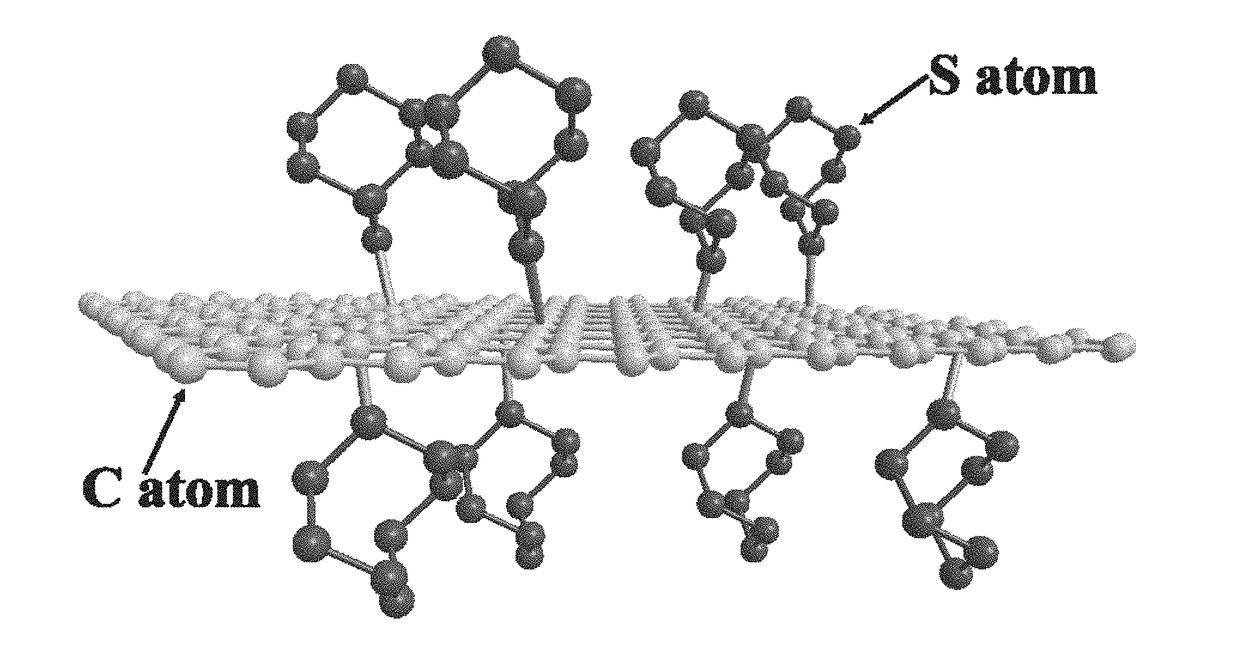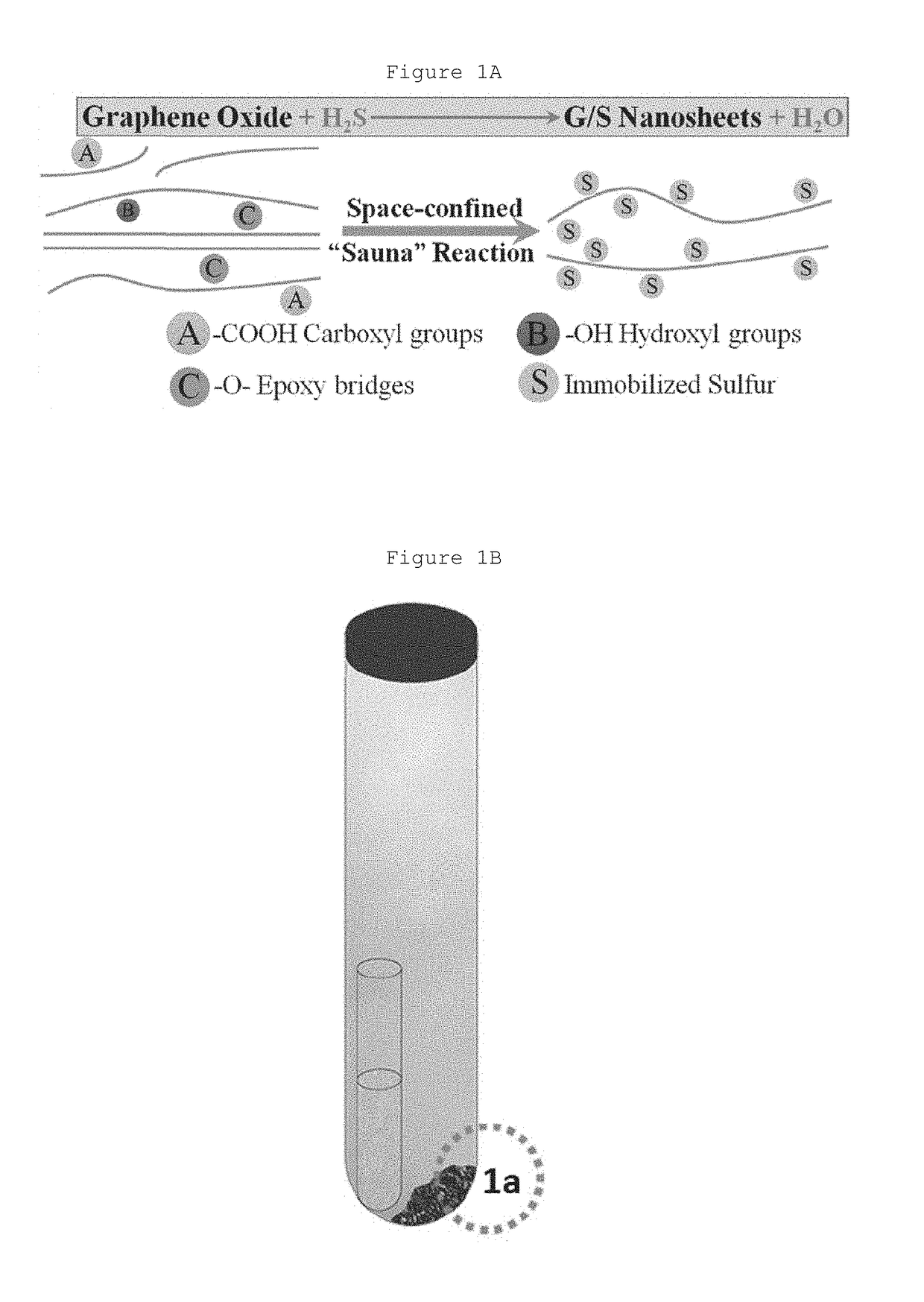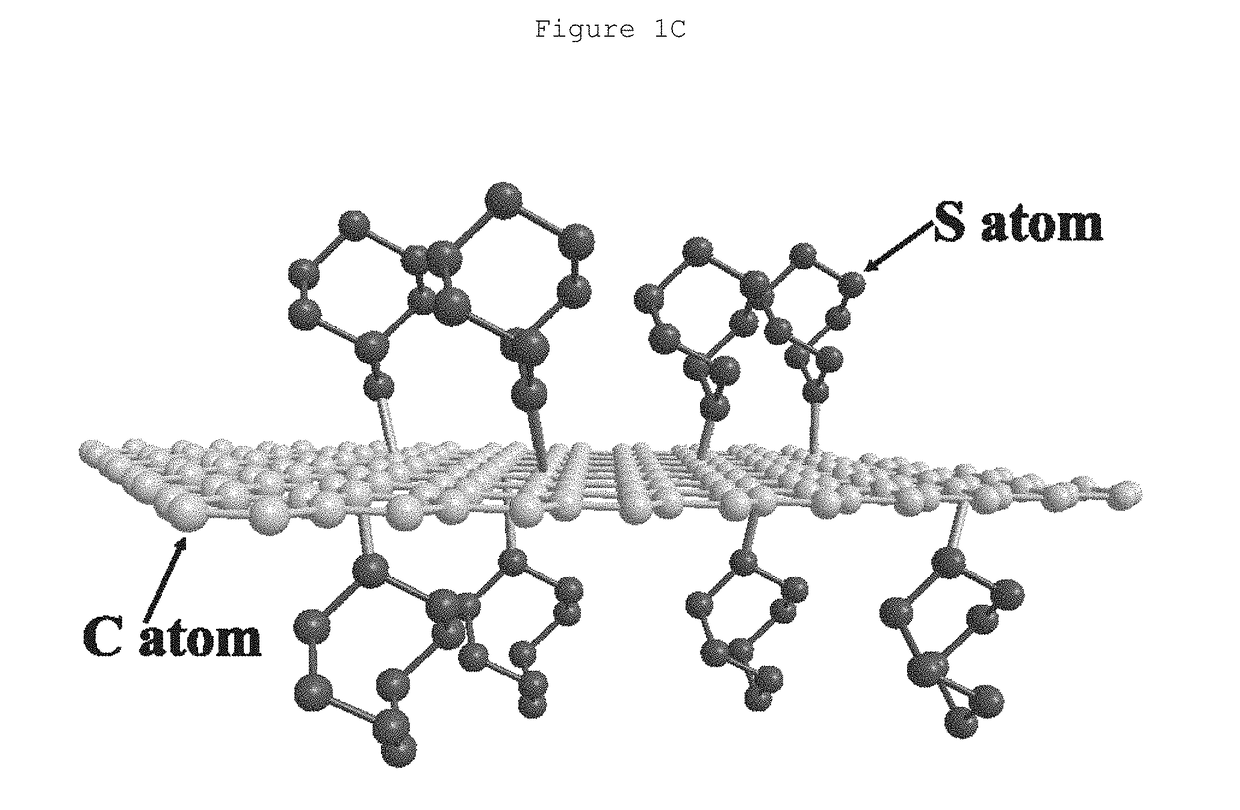Synthesis method for cathode material in lithium-sulfur battery
a lithium-sulfur battery and cathode material technology, applied in the field of lithium-sulfur battery synthesis method, can solve the problems of limiting the rate performance of such batteries, low overall utilization of sulfur electrodes, and formidable challenges of state-of-the-art li-ion battery technology, and achieves complete h2s utilization, high sulfur loading, and tight contact on gis interface
- Summary
- Abstract
- Description
- Claims
- Application Information
AI Technical Summary
Benefits of technology
Problems solved by technology
Method used
Image
Examples
example 1
Synthesis of GO
[0069]GO was prepared from natural graphite flakes by a modified. Hummers' method as reported elsewhere [43]. The as-synthesized GO suspension was freeze-dried to obtain GO powder with high porosity.
example 2
Synthesis of G / S Nanosheets
[0070]This example illustrates the preparation of G / S hybrid nanosheets.
[0071]The G / S hybrid nanosheets were synthesized from a novel “sauna” system (see FIG. 1B). A homogeneously mixed powder of GO and TAA (weight ratio of 1:20) was placed in a Teflon vessel (36 cc in volume) together with a glass tube filled with deionized water (1 cc). The vessel was sealed inside an argon-filled glove box and then heated to 200° C. for 20 h, wherein the heating rate was 1° C. min−1. The product was collected from the vessel after it was furnace-cooled to room temperature. After being washed with distilled water and absolute ethanol in turns, the G / S hybrid nanosheets were obtained after being vacuum-dried at 50° C. for 24 h.
example 3
Materials Characterization
(1) Thermal Gravimetric (TGA) Measurement
[0072]Procedure: TGA was conducted on a Perkin-Elmer Diamond TG / DTA (thermogravimetry / differential thermal analysis) thermal analyzer.
[0073]Results: The S loading amount in the composite obtained from Example 2 was as high as 68% based on the thermal gravimetric (TGA) measurement in a nitrogen environment (FIG. 6), among the highest of reported graphene / sulfur composites. TGA results in FIG. 6 also suggest that the sulfur in G / S hybrid nanosheets is more thermally stable than when it is in its pure state, implying enhanced affinity and interaction between sulfur and graphene in the prepared composite (FIG. 1C).
(2) Transmission Electron Microscopy (TEM) and Scanning Electron Microscopy (SEM) Experiments
[0074]Procedure: SEM observations were made on a JEOL JSM-6700F field-emission SEM. TEM images, SAED patterns, EELS, EDS, HAADF images, and elemental maps were obtained on a JEOL JEM-2100F scanning transmission electron...
PUM
| Property | Measurement | Unit |
|---|---|---|
| temperature | aaaaa | aaaaa |
| charging capacity | aaaaa | aaaaa |
| electronic conductivity | aaaaa | aaaaa |
Abstract
Description
Claims
Application Information
 Login to View More
Login to View More - R&D
- Intellectual Property
- Life Sciences
- Materials
- Tech Scout
- Unparalleled Data Quality
- Higher Quality Content
- 60% Fewer Hallucinations
Browse by: Latest US Patents, China's latest patents, Technical Efficacy Thesaurus, Application Domain, Technology Topic, Popular Technical Reports.
© 2025 PatSnap. All rights reserved.Legal|Privacy policy|Modern Slavery Act Transparency Statement|Sitemap|About US| Contact US: help@patsnap.com



